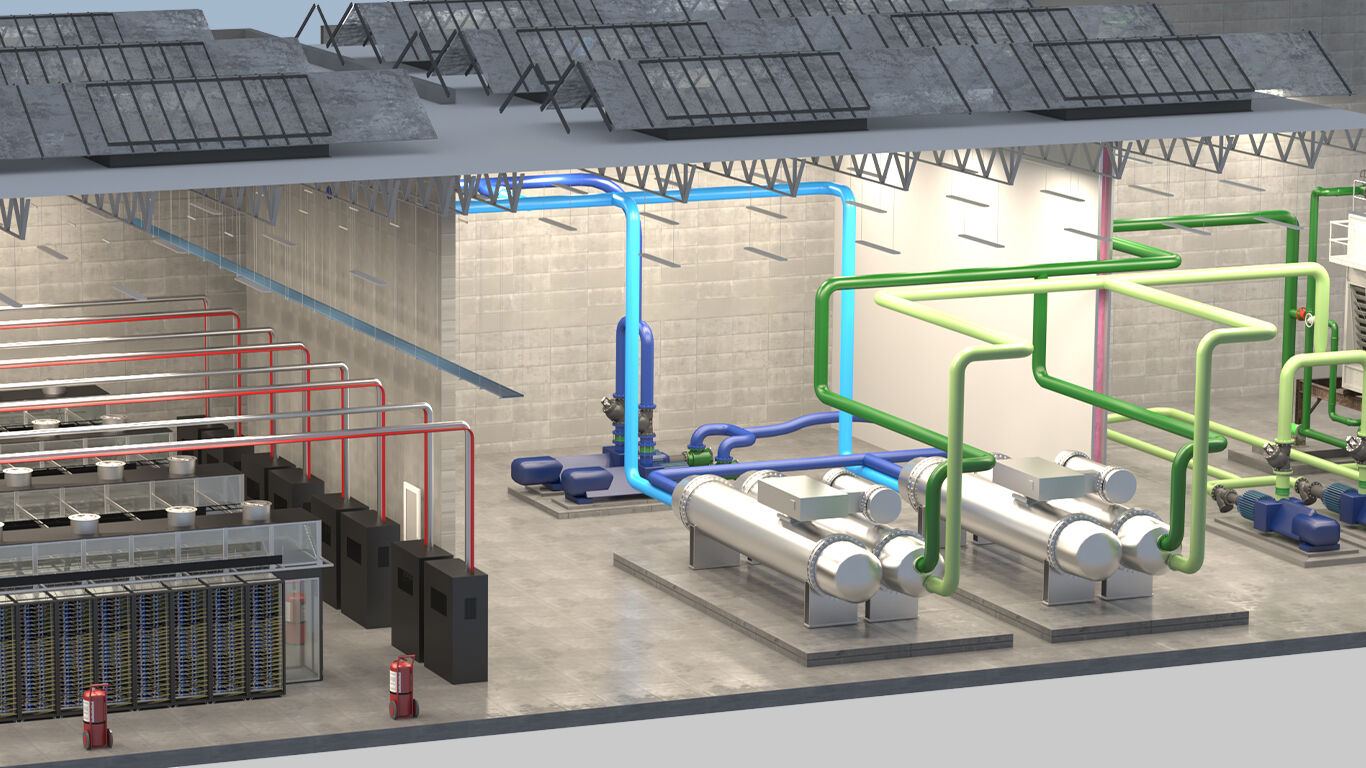Cooling Data Centers With Water
Technologies, Process, and Chemistry


Recently, there was information circulating internet that Google uses 3.3bln gallons of water to cool its data center. I have done some reesearch to learn more about the cooling process and chemistry used for it.
How much water do US IT companies use to cool their data centers?
The exact amount of water used by US IT companies to cool their data centers is not publicly disclosed by the companies or by industry groups. However, data centers in general consume a significant amount of energy for cooling, and companies in the IT industry have made commitments to using sustainable and energy-efficient technologies to reduce their water usage and overall environmental impact. This can include using outside air cooling, using recycled water, and innovative cooling systems. According to the recently leaked info, Google uses 3.3bln gallons of water annually.
Cooling Technologies
Data centers use various cooling technologies, but the most common ones use refrigerants, typically hydrofluorocarbons (HFCs), as the cooling medium. The refrigerants are used in air conditioning units, chillers, and other cooling systems to transfer heat from the data center to the outside environment.
Other cooling technologies used in data centers include direct or indirect evaporative cooling, which uses water to transfer heat, and immersion cooling, where the electronics are submerged in a non-conductive liquid coolant.
It's worth noting that the use of HFCs as refrigerants has significant environmental impact and contributes to global warming, and there is ongoing effort to phase them out and replace them with more environmentally friendly alternatives, such as hydrochlorofluorocarbons (HCFCs) and natural refrigerants such as carbon dioxide (CO2).
The most efficient way to cool processors in data centers
The most efficient way to cool processors in data centers can vary depending on several factors, such as the size and location of the data center, the climate, and the type of equipment used. However, some of the most common and efficient cooling methods for data centers include:
- Outside Air Cooling: Utilizing cool outside air to directly cool the hot air generated by the equipment, which can significantly reduce the need for mechanical cooling systems.
- Liquid Cooling: Directly cooling the processors using liquid coolants, which can have higher heat transfer efficiency compared to air cooling.
- Immersion Cooling: Submerging the electronics in a non-conductive fluid, which provides a high heat transfer rate and eliminates the need for air cooling.
- Evaporative Cooling: Indirectly cooling the air using water evaporation, which can provide a highly efficient cooling solution in low humidity climates.
- Waste Heat Recovery: Capturing and reusing waste heat generated by the data center to provide additional cooling or to heat other parts of a building.
In any case, the most efficient cooling method depends on the specific data center and the conditions surrounding it, and multiple cooling solutions can be combined for optimal performance.
It's also important to consider energy-efficient and sustainable technologies, such as using renewable energy sources, reducing water usage, and implementing energy-efficient cooling systems. The most efficient cooling method depends on the specific data center and the conditions surrounding it, and multiple cooling solutions can be combined for optimal performance.
One must follow these steps to find the most optimal solution for cooling their data center:
- Conduct a Site Assessment: Evaluate the specific conditions of the data center, including the size, location, climate, and equipment used, to determine the most effective cooling methods.
- Analyze Energy Efficiency: Evaluate the energy consumption and efficiency of existing cooling systems and identify opportunities for improvement.
- Consider Cooling Technologies: Evaluate various cooling technologies, such as outside air cooling, liquid cooling, immersion cooling, evaporative cooling, and waste heat recovery, to determine the best options for the specific data center.
- Consider Sustainability: Consider the sustainability of the cooling solutions, including the use of renewable energy sources, reducing water usage, and implementing energy-efficient cooling systems.
- Implement the Solution: Based on the analysis, implement the most optimal and sustainable cooling solution for the data center, and monitor its performance regularly.
- Continuously Evaluate and Improve: Continuously monitor and evaluate the cooling system's performance, and make improvements as necessary to ensure optimal cooling and energy efficiency.
It's also important to keep in mind the budget and operational considerations, as well as any industry standards and regulations, when making recommendations.
What role does chemistry play in water cooling technology?
Chemistry plays a crucial role in water cooling technology. The properties of water and the materials used in water cooling systems can significantly affect their performance and efficiency.
For example, the pH level of the water can impact the corrosion of the metal components used in the cooling system, and the presence of impurities, such as minerals and dissolved gases, can affect the heat transfer efficiency. To mitigate these effects, chemical treatments, such as pH adjustment and the addition of inhibitors, are used to maintain the water quality and protect the system components.
The choice of coolant also involves chemistry, as different coolants have different thermal and chemical properties that can impact the cooling performance and system efficiency. For example, water-based coolants are widely used for their high heat transfer efficiency, but they also require additional chemical treatments to prevent corrosion and scaling.
In water cooling technology for data centers, the following chemicals are commonly used:
- Corrosion inhibitors: These are used to protect the metal components of the cooling system from corrosion, such as copper and aluminum.
- Scale inhibitors: These are used to prevent mineral buildup in the system, which can reduce the efficiency of heat transfer.
- Biocides: These are used to control the growth of bacteria and other microorganisms in the cooling water, which can cause corrosion and fouling of the system components.
- pH adjusters: These are used to maintain the pH of the cooling water within a specific range, typically between 7.0 and 8.5, to optimize the performance of the cooling system and prevent corrosion.
- Antifreeze: This is used to prevent freezing of the coolant in low temperature environments. Ethylene glycol and propylene glycol are commonly used as antifreezes in data center cooling systems.
These chemicals are used in specific concentrations, and the choice and application of the chemicals should be carefully considered to ensure the optimal performance and safety of the cooling system.